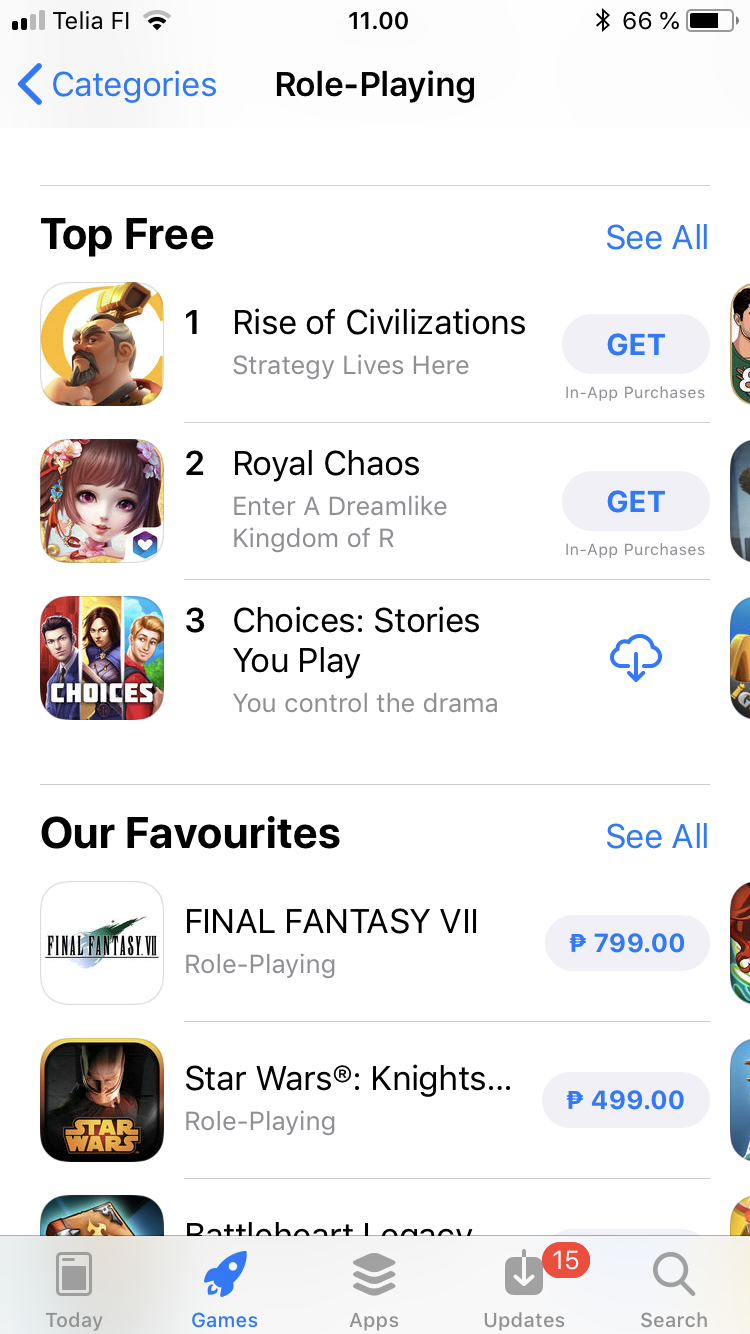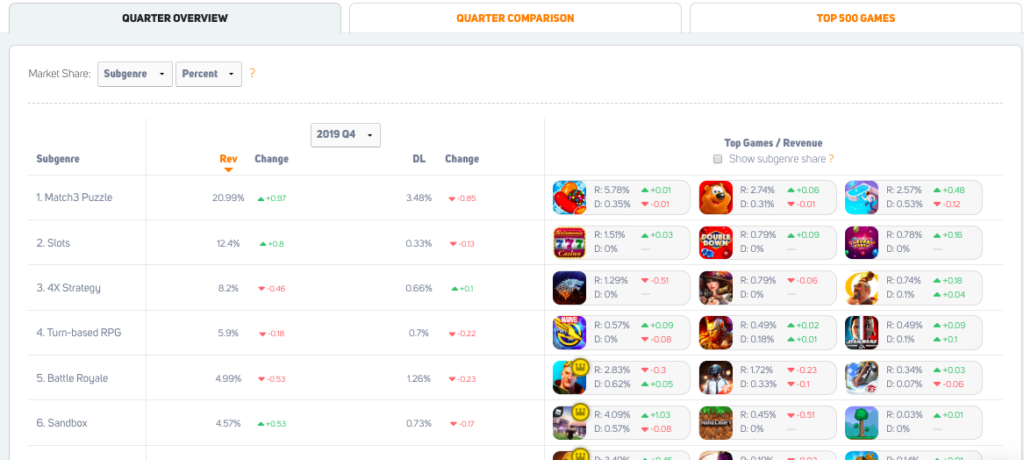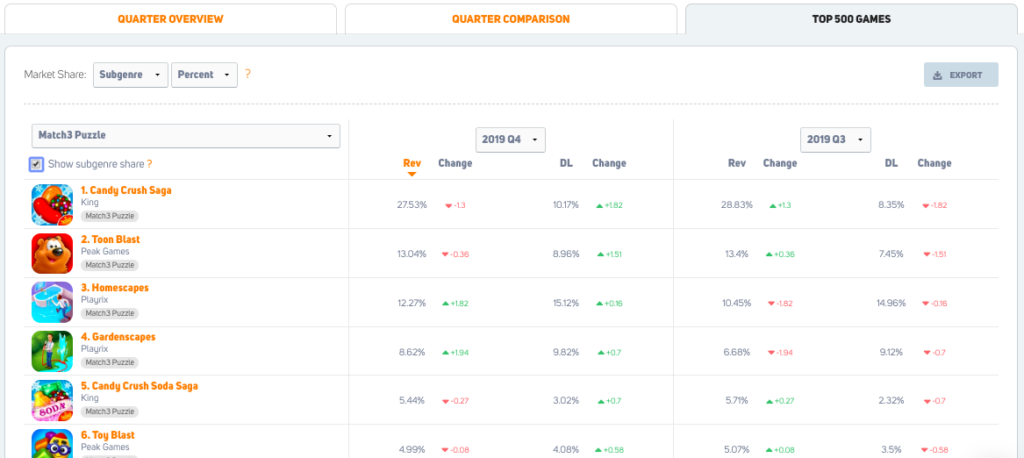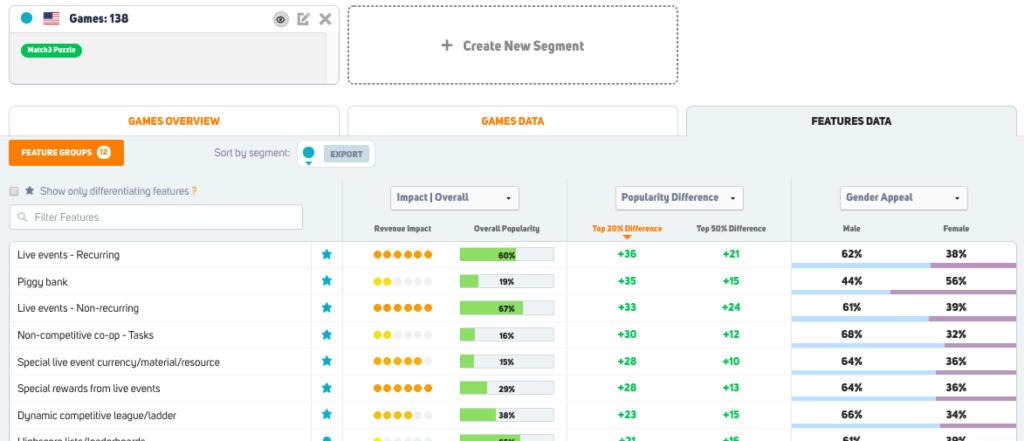When creating a hit product – whether it’s a mobile game or an electric car – most experts will agree on one thing: understanding the market, your competitors and your target audience is crucial for success. In other words, if you’re not aware of what’s going on in your industry, you’re probably better off doing something else. In mobile games, this statement holds true exceptionally well as the struggle for attracting (and maintaining) customers in increasingly tough competition is an everyday reality.
Editor’s note: In April 2021, we updated the GameRefinery genre taxonomy to reflect the evolving mobile gaming market. That’s why we thought it’s also a good time to revisit and update this post on why we believe the mobile gaming industry needs a new taxonomy.
To maximize your chances of success, you should properly research the genre you’re planning to enter. And this entails a thorough mapping of your current rivals, their performance, and feature-set. Unfortunately, it might be quite hard to get a comprehensive view of the competition or even define what genre your game actually represents. This creates a challenge when trying to measure the potential of your game.
The roots of this “genre problem” are in the fragmentation and diversity of the mobile gaming space in general. With so many different game archetypes, hybrids, and constant innovation, it’s not easy to categorize games in a meaningful and consistent way. A well-defined, comprehensive taxonomy would offer tremendous advantages, and thus many companies often end up creating their own internal methods to tackle the issue.
Rise of Civilizations and Choices are miles apart when it comes to game mechanics or the target audience. And would you call either one a role-playing game?
Here at GameRefinery, we’ve been working hard for a solution to help our clients in painting a crystal clear picture of the mobile game market as a whole. And now, after a lot of data-crunching, testing and working together with Michail Katkoff of Deconstructor of Fun, we think we’re on to something good.
Laying Down the Rules
Flexibility. That’s one key thing we required from the new taxonomy. Since there are dozens of game archetypes and new ones popping up quite regularly, a too static approach would quickly become obsolete. To keep things dynamic, it should be relatively easy to add new genres to the model. And our three-layered hierarchy makes that possible:
- Game Category
- Game Genre
- Game Subgenre
Here’s how it works: Each game is given a Subgenre based on its features and defining game mechanics. For example, a game with a match3 core and character development meta features would go under the “Puzzle RPG” Subgenre. The subgenre is then automatically assigned to a Genre, which is in turn assigned to a higher-level Category. As a result, each game belongs to one – and only one – Category, Genre and Subgenre. This “singularity” is a key requirement to use genres as a solid basis for market research. If one game belongs to more than one genre (as e.g. the AppStore), genre feasibility measurement and comparison (revenues, downloads, etc.) becomes really tricky.
With this three-layered approach, we’ve been able to group all games under distinctive genres, which in turn acts as an extremely helpful taxonomy for market and game research. And as a picture is often worth a thousand words, here’s a full view of our genre taxonomy with Subgenres grouped under Genres and ultimately Categories:
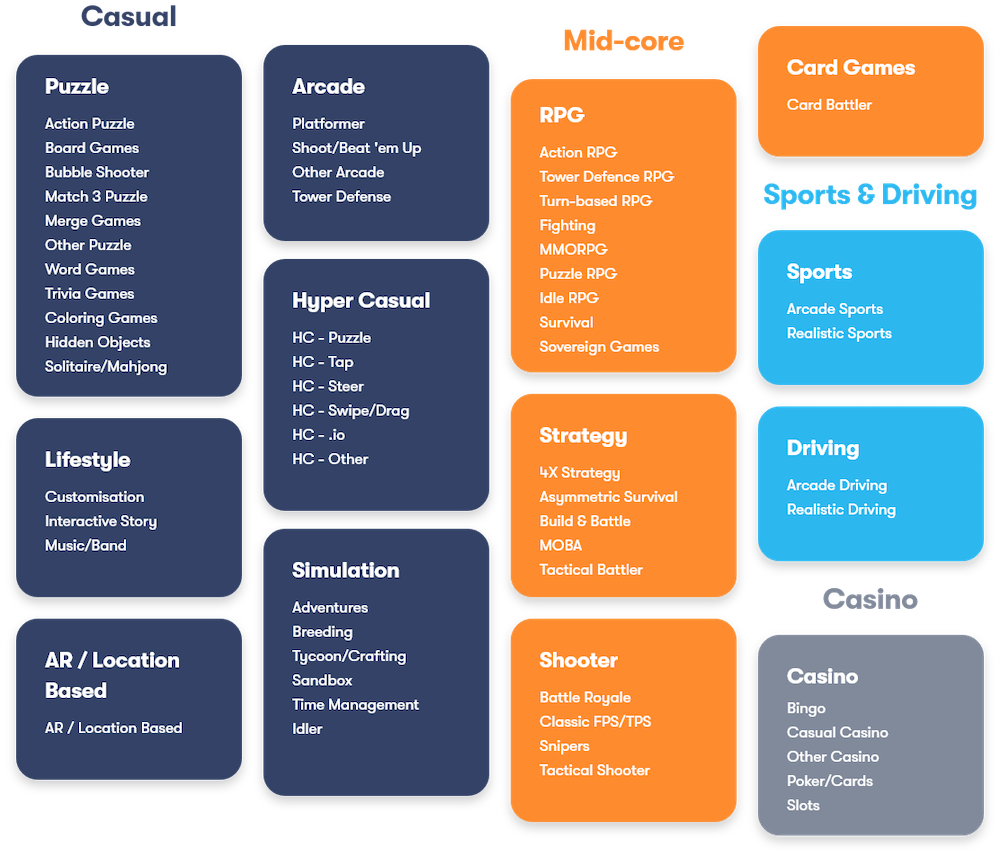
GameRefinery’s full genre taxonomy opened up in detail
Categories
As you can see, there are four main Categories with Casino and Sports & Driving games forming their own groups separate from Mid-Core and Casual games. The reason for this separation is that casino, driving, and sports games have unique target audiences and core features in comparison to other games. For example, hunting sports games might have identical game mechanics with sniper games, but the player base is far from that.

Shooting people and shooting animals tends to appeal to different types of gamers
Genres
On the Genre level, things get even more interesting, as specific game archetypes receive groups of their own and you start to see more meaningful differentiation. This second level is often detailed enough for many companies to research their competitive field on a broader scale. For example, games falling under the “Shooting” genre share many key game mechanics and fight for very similar demographic audiences. With these 13 Genres, we’re able to cover the current mobile game archetypes and gain a better understanding of which genres are gaining or losing ground in any given market.
Subgenres
However, to drill down to your closest competitors and research your game’s market opportunities, you need to add a third layer to the mix. The Subgenre level opens up a truly comprehensive view of the current mobile gaming space in all its diversity and enables a detailed apples to apples (and not to, say, pears) comparison. For example, when Battle Royale games took AppStore by storm, we created a new Subgenre to give our client’s the possibility to research Battle Royale games as a separate game type and market.

PUBG Mobile and World of Tanks are both Shooters but differ significantly at the feature & game mechanic level
So What’s In It For You?
The ultimate advantage of our game mechanic & feature-based genre taxonomy is its superiority in mapping the market in a meaningful way. By being able to segment games accurately, you’re much more aware of which genres are trending or on a decline. Even more importantly, you can pinpoint which games are the kings or queens in those genres and how big of a share of the market they cover. Without a thorough understanding of your competition and the market, you’re awfully shorthanded right from the first steps of the game design process.
In the GameRefinery service, the introduction of this new genre taxonomy has opened numerous opportunities to provide even more actionable insights to our users. For example, you can instantly see which Genres and Subgenres are getting the most downloads or making the most revenue:
Match3, Slots, and 4X Strategy were the top moneymakers in the US market during Q4 2019
And then dive deeper into any Subgenre to see which games are the top dogs of that game type:
Inside Match3 Candy Crush is still the King, but several rivaling titles are catching up on it!
When combined with our feature data things get interesting. You’re able to research in-depth feature data specifically relating to any genre:
Some features differentiating the best from the rest within Match3 games
As you can see, a feature and game mechanic based genre taxonomy opens up the mobile gaming market in a way never seen before, giving you a data-driven edge in understanding the market.
We are constantly bringing new interesting data and tools to our platform – login now to stay on top of market trends!


